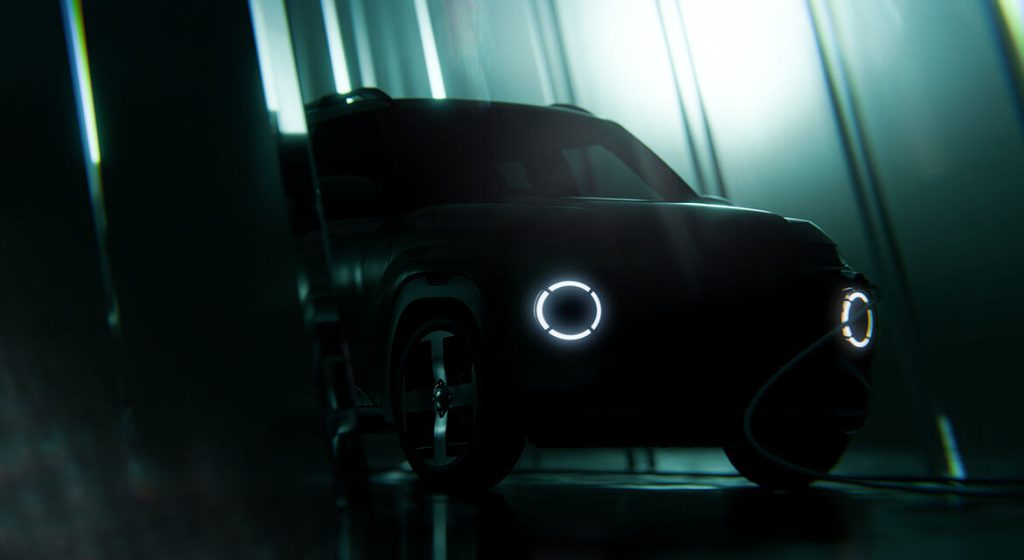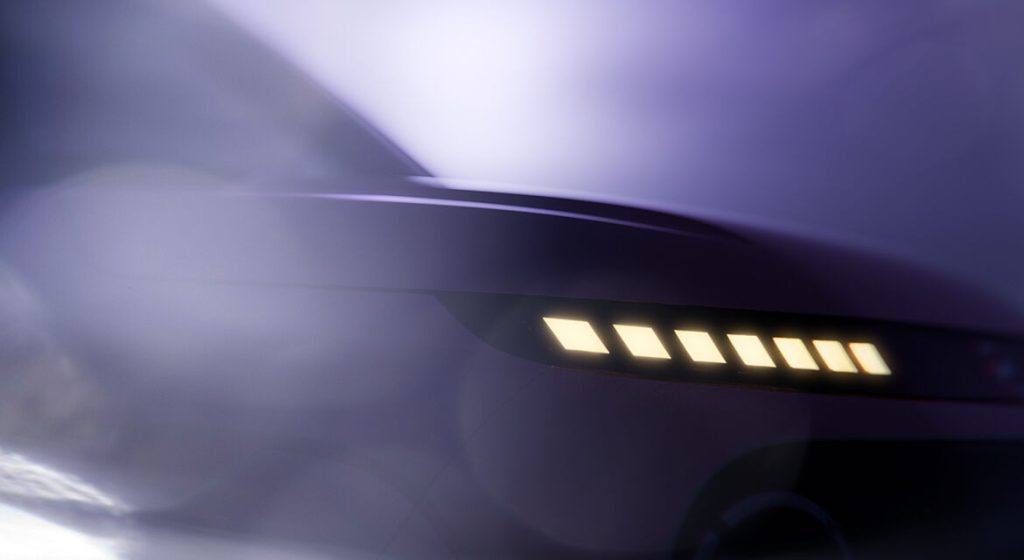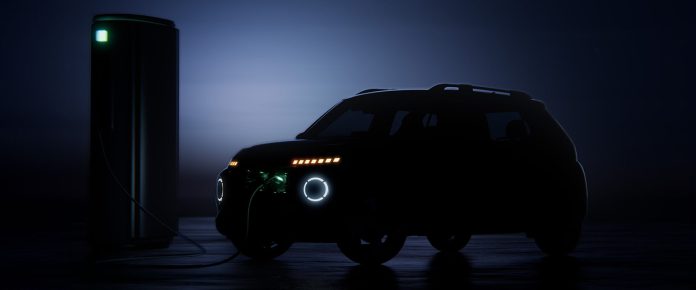Electric vehicles (EVs) are rapidly gaining popularity in India, and Hyundai seems to be diving into this space with full force. The Hyundai Inster EV, recently teased, is a promising addition to the EV lineup and could significantly impact the urban mobility landscape. While it’s not yet confirmed for India, the Inster EV offers a glimpse into what we can expect from Hyundai’s future electric offerings.
What is the Hyundai Inster EV?
The Hyundai Inster EV is essentially an electric version of the Hyundai Casper, a compact SUV primarily available in South Korea. The name “Inster” is a blend of “intimate” and “innovative,” reflecting the vehicle’s design ethos. The Inster EV is designed to be an urban-friendly vehicle with advanced technology and a stylish look.
Hyundai Inster EV Design and Features
A Fresh Take on the Hyundai Casper
The Inster EV retains the basic silhouette of the Hyundai Casper but with several modern tweaks. It features a unique front fascia with pixel-style quad-element circular LED DRLs and 7-element LED turn indicators, giving it a futuristic look. The tail lights also sport a pixel effect, adding to the vehicle’s modern appeal.





Urban Crossover Appeal
Like the Casper, the Inster EV is equipped with crossover elements such as roof rails, body cladding, and high ground clearance. These features make it suitable for city driving while giving it a rugged look that appeals to urban adventurers.
Charging Port and Battery Range
The Inster EV’s charging port is conveniently located at the front of the vehicle, although it’s not centered like in some other EVs. Hyundai has revealed that the Inster EV will offer an impressive range of 355 km on a single charge (WLTP). While battery and motor specs are yet to be disclosed, this range positions the Inster EV as a strong contender in the urban EV market.
Hyundai Inster EV Vs. Hyundai Casper
The Hyundai Inster EV and Hyundai Casper share a lot in terms of design and structure. However, the Inster EV brings an electric twist to the equation. Here’s a quick comparison:
- Exterior: Both vehicles have a similar silhouette, but the Inster EV features more modern and futuristic design elements.
- Powertrain: The Casper runs on conventional fuel, while the Inster EV is all-electric, offering a cleaner and more sustainable driving option.
- Technology: The Inster EV is expected to come with advanced technology features, enhancing its appeal to tech-savvy urban drivers.
The Growing Popularity of EVs in India
India is witnessing a rapid shift towards electric mobility, driven by government incentives, rising fuel prices, and increasing environmental awareness. More automakers are entering the EV space, and Hyundai is no exception. With models like the Kona Electric already available, Hyundai is poised to expand its EV portfolio in India.
Why the A-Segment is Crucial for EV Adoption
Affordability and Accessibility
A-segment vehicles are smaller, more affordable cars that are perfect for city driving. They play a crucial role in the faster adoption of EVs in India due to their lower price points, making electric mobility accessible to a broader audience.
High Demand for Compact EVs
The lion’s share of India’s electric car sales comes from smaller EVs like the Tata Punch EV, Tata Tiago EV, and MG Comet EV. Targeting this segment allows automakers to push higher volumes and tap into the growing demand for compact electric vehicles.
Hyundai Inster EV: A Potential Game Changer for India
Design and Appeal
The Inster EV’s design is miles ahead of the recently launched Hyundai Exter in India. Its crossover design, combined with advanced features and a decent driving range, makes it an attractive option for urban drivers.
Competing with the Tata Punch EV
If Hyundai decides to launch the Inster EV in India, it will directly compete with the Tata Punch EV, which is currently one of the hottest EVs in the mainstream segment. The Inster EV’s modern design and impressive range could give it an edge in this competitive market.
Potential Powertrain for Future Models
Even if the Inster EV itself doesn’t make it to India, its powertrain might be used in upcoming models like the Exter EV or other future Hyundai and Kia electric vehicles. This strategy would allow Hyundai to leverage the Inster EV’s technology and design to capture a significant share of the Indian EV market.
Hyundai’s Electric Strategy in India
Expanding the EV Lineup
Hyundai has already made strides in the Indian EV market with the Kona Electric. The upcoming Creta EV, speculated to launch in early 2025, will further expand Hyundai’s electric portfolio. By targeting different segments, Hyundai aims to cater to a wide range of customers, from premium buyers to those looking for affordable electric mobility solutions.
Building Charging Infrastructure
For EVs to succeed, a robust charging infrastructure is essential. Hyundai is likely to invest in expanding charging networks across India, making it easier for customers to own and operate electric vehicles. Partnerships with charging station providers and the development of home charging solutions will be crucial components of this strategy.
The Future of Electric Mobility in India
Government Incentives and Policies
The Indian government’s push for electric mobility through incentives and policies is a significant driver for the EV market. Subsidies on EV purchases, tax benefits, and investments in charging infrastructure are encouraging more consumers to switch to electric vehicles.
Consumer Awareness and Acceptance
As consumers become more aware of the benefits of electric vehicles, acceptance is growing. EVs offer lower running costs, reduced maintenance, and a smaller carbon footprint, making them an attractive choice for environmentally conscious buyers.
Technological Advancements
Advancements in battery technology and electric drivetrains are making EVs more efficient and affordable. Longer ranges, faster charging times, and improved performance are helping overcome the traditional barriers to EV adoption.
Hyundai Inster EV: A Vision for the Future
The Hyundai Inster EV represents a bold step towards a more sustainable and innovative future. Its stylish design, advanced features, and impressive range make it a promising addition to the electric vehicle market. While its launch in India is not yet confirmed, the Inster EV offers a glimpse into the future of urban mobility and Hyundai’s commitment to driving change.
Conclusion
The Hyundai Inster EV is a testament to Hyundai’s vision for the future of urban mobility. With its innovative design, advanced features, and strong performance, the Inster EV has the potential to set new standards in the electric vehicle market. Whether it makes its way to India or not, the Inster EV showcases Hyundai’s dedication to sustainability and technological advancement. As the Indian EV market continues to grow, Hyundai’s strategic moves in this space will be crucial in shaping the future of electric mobility in the country.
By focusing on the A-segment and leveraging the powertrain from the Inster EV, Hyundai can cater to the rising demand for affordable and efficient electric vehicles. As more consumers embrace electric mobility, Hyundai’s innovative approach and commitment to excellence will undoubtedly play a pivotal role in driving the EV revolution in India.


































